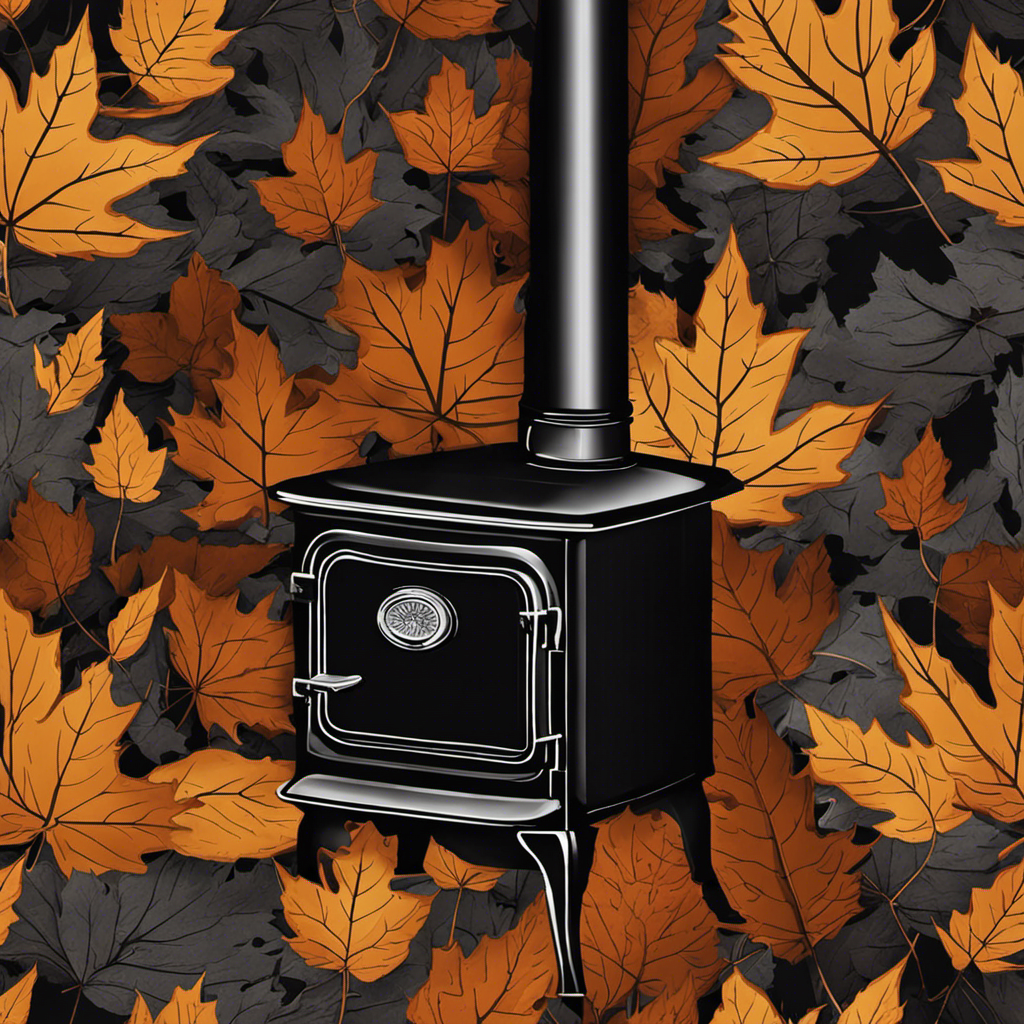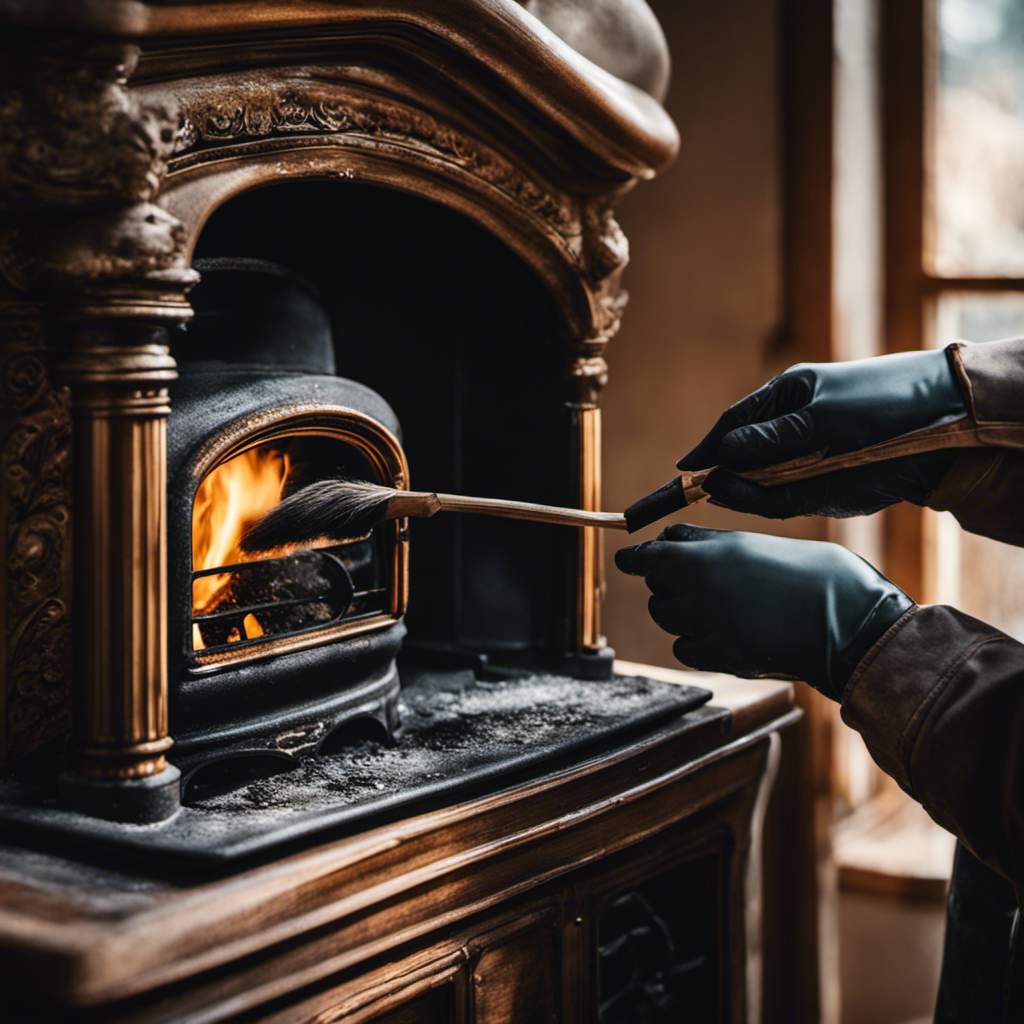I have often pondered the perfect amount of ash to keep in my wood stove for optimal efficiency. It seems that achieving the right balance is crucial.
Too much ash can hinder airflow and reduce heat output, while too little can lead to incomplete combustion.
In this article, we’ll explore the importance of proper ash levels, factors to consider when determining ash amounts, and tips for managing them effectively.
So, let’s dive in and discover the key to a well-functioning wood stove.

Key Takeaways
- Proper ash levels are important for better airflow, efficient combustion, and to prevent the buildup of creosote.
- Understanding factors such as wood type, frequency of stove usage, and regular cleaning and maintenance are essential in determining ash amounts.
- Excessive ash hinders air circulation, leads to incomplete combustion, and decreases heat output.
- Signs of too much ash in a wood stove include poor heat output, increased fire risk, sudden flare-ups or chimney fires, decreased efficiency, and increased smoke production.
The Importance of Proper Ash Levels
I understand the importance of maintaining proper ash levels for efficient wood stove operation. Regular ash removal offers several benefits.
Firstly, it promotes better airflow, allowing the fire to burn more efficiently. Excessive ash can restrict the flow of oxygen, leading to poor combustion and reduced heat output.
Additionally, removing ash on a regular basis prevents the buildup of creosote, a highly flammable substance that can cause chimney fires.
To prevent ash buildup in your wood stove, it’s recommended to clean the firebox regularly, preferably after each use. Use a shovel or a specialized ash removal tool to scoop out the ashes.
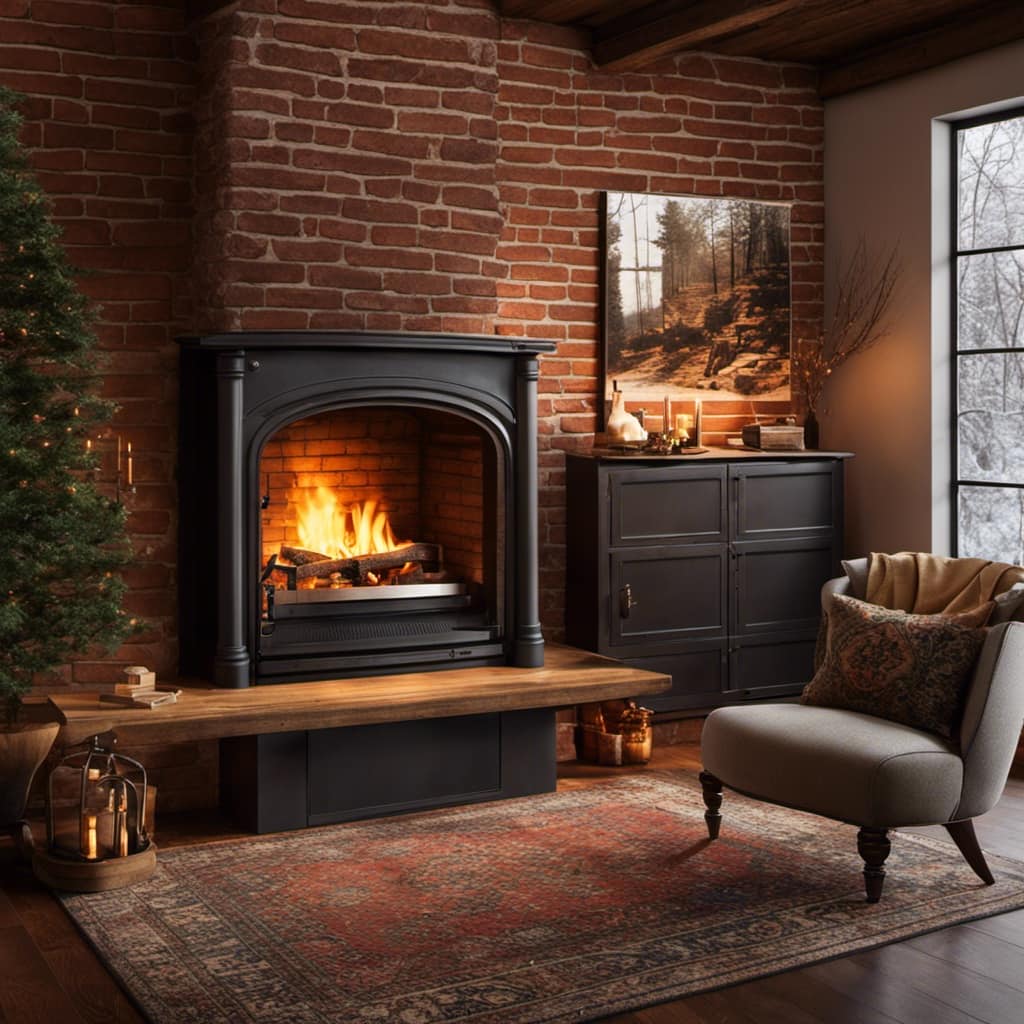
Remember to always wait until the ashes have cooled completely before disposing of them.
Proper ash maintenance is essential for safe and efficient wood stove operation.
Factors to Consider When Determining Ash Amounts
When determining ash amounts, it’s important to consider both the type of wood being burned and the frequency of stove usage. Factors to consider include:
Wood type: Different types of wood produce varying amounts of ash. Hardwoods like oak and maple tend to create more ash compared to softwoods like pine and fir. Understanding the characteristics of the wood you’re burning can help you estimate the amount of ash that will be produced.
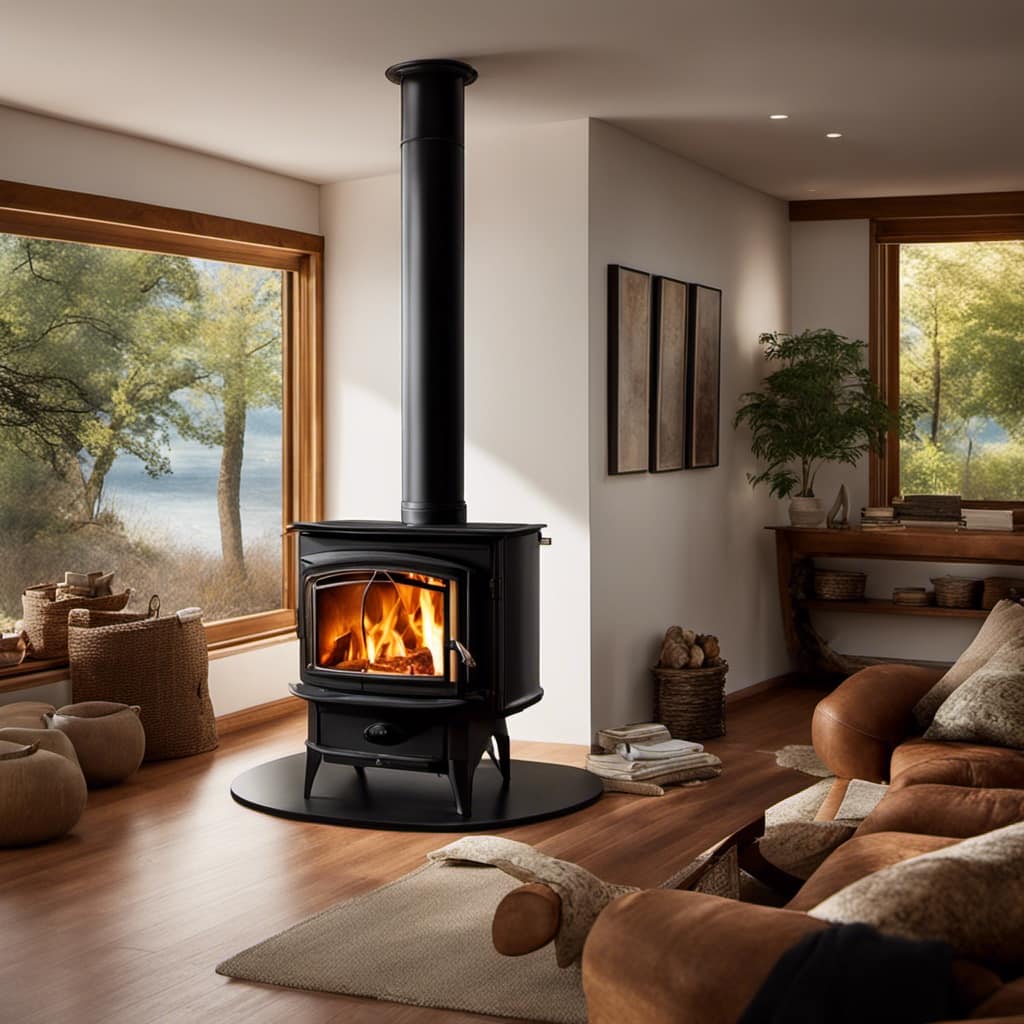
Stove usage: The frequency at which you use your wood stove also affects the amount of ash that accumulates. Regular use will result in more ash buildup, requiring more frequent maintenance.
Maintenance tips: To keep your wood stove running efficiently, it’s important to regularly remove accumulated ash. Excessive ash can impede airflow and affect combustion, reducing the stove’s performance. Regular cleaning and proper ash disposal are essential maintenance practices.
Considering these factors and following proper maintenance tips will help you determine the appropriate amount of ash that should be inside your wood stove.
The Optimal Ash Depth for Efficient Wood Burning
To achieve efficient wood burning, it’s important to find the optimal ash depth and regularly maintain it. The buildup of ash in a wood stove can significantly impact its efficiency. When the ash depth exceeds the recommended level, the air circulation within the stove is hindered, leading to incomplete combustion and decreased heat output.

It’s crucial to understand the impact of ash buildup on stove efficiency and take necessary measures to prevent it.
Regularly removing the accumulated ash is key to maintaining optimal stove performance. There are various ash disposal methods available, including using a shovel or a vacuum cleaner specifically designed for ash removal. It’s important to ensure that the ash is completely cooled before attempting to remove it from the stove to prevent any potential fire hazards.
Signs of Too Much Ash in Your Wood Stove
Although it can be easy to overlook, excessive ash buildup in your wood stove can lead to decreased efficiency and potential fire hazards. As a wood stove enthusiast, it’s crucial to be aware of the signs of too much ash in your stove.
Here are three common mistakes to avoid and potential dangers to watch out for:
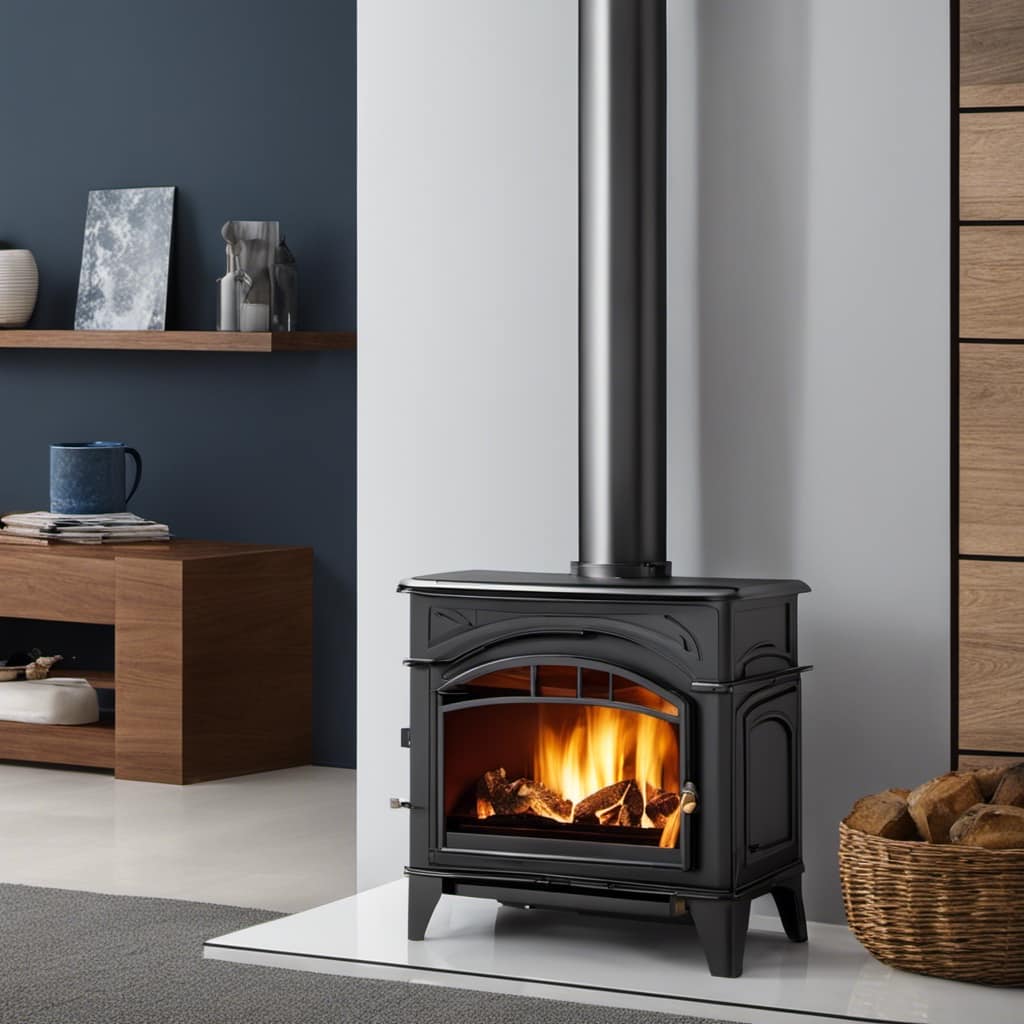
Neglecting regular maintenance: Failing to clean out the ash regularly can result in a thick layer of ash that restricts airflow and hampers combustion. This can lead to poor heat output and increased smoke production.
Allowing ash to accumulate near combustible materials: It’s essential to keep the area around the wood stove clear of combustible materials like wood, paper, or fabrics. Excessive ash buildup can increase the risk of accidental fires.
Ignoring the quality of ash: Ash that contains unburned materials like wood chunks or coal can pose a danger. These materials can ignite and cause sudden flare-ups or chimney fires.
Tips for Properly Managing Ash Levels in Your Wood Stove
I find that regularly removing ash from my wood stove improves its efficiency and prevents potential hazards. Proper ash management is crucial for maintaining the performance and safety of your wood stove. Here are some tips for managing ash levels effectively:

Frequency: Remove ash when it accumulates to about an inch or two. Avoid letting it pile up too much as it can restrict airflow and reduce heat transfer.
Ash disposal techniques: Use a metal container with a tight-fitting lid to store and dispose of ash. Never use plastic or combustible materials for ash storage, as hot embers can remain for several days.
Benefits of ash for gardening:
| Nutrients | Soil pH Adjustment |
|---|---|
| Ash contains essential nutrients like potassium, phosphorus, and calcium, which are beneficial for plant growth. | Wood ash can help adjust soil pH levels, making it more alkaline. This is particularly helpful for plants that prefer alkaline soil, such as lilacs and clematis. |
Can How Much Air You Use with a CSL in a Wood Stove Affect the Amount of Ashes Inside?
The air usage in wood stove can significantly impact the amount of ashes inside. Controlling the air intake can influence the combustion process, affecting the amount of oxygen and heat produced. Adjusting the air flow can help regulate the burn rate and ensure efficient fuel consumption, reducing the buildup of ashes.
Frequently Asked Questions
How Often Should I Clean Out the Ashes From My Wood Stove?
I clean out the ashes from my wood stove at least once a week to prevent ash buildup. It’s important to properly dispose of wood stove ashes to avoid any potential fire hazards.

Can I Use the Ashes From My Wood Stove as Fertilizer in My Garden?
Using wood stove ashes for compost in your garden can provide numerous benefits. It enriches the soil with essential nutrients like potassium and calcium, improves pH levels, and can help deter pests.
What Are the Potential Dangers of Having Too Much Ash in My Wood Stove?
Having too much ash in a wood stove can pose potential health risks, such as releasing harmful chemicals and causing poor air quality. It is important to properly dispose of excess ashes to maintain a safe and efficient wood stove operation.
Should I Remove All the Ashes From My Wood Stove Before Starting a New Fire?
Before starting a new fire, it is advisable to leave a small amount of ashes in the wood stove. Removing all the ashes can disrupt airflow and make it harder to start the fire.
Are There Any Specific Types of Wood That Produce More or Less Ash in a Wood Stove?
Different types of firewood have varying ash content in a wood stove. Hardwoods like oak produce less ash compared to softwoods like pine. Properly dispose of wood stove ashes by placing them in a metal container and allowing them to cool before disposal.
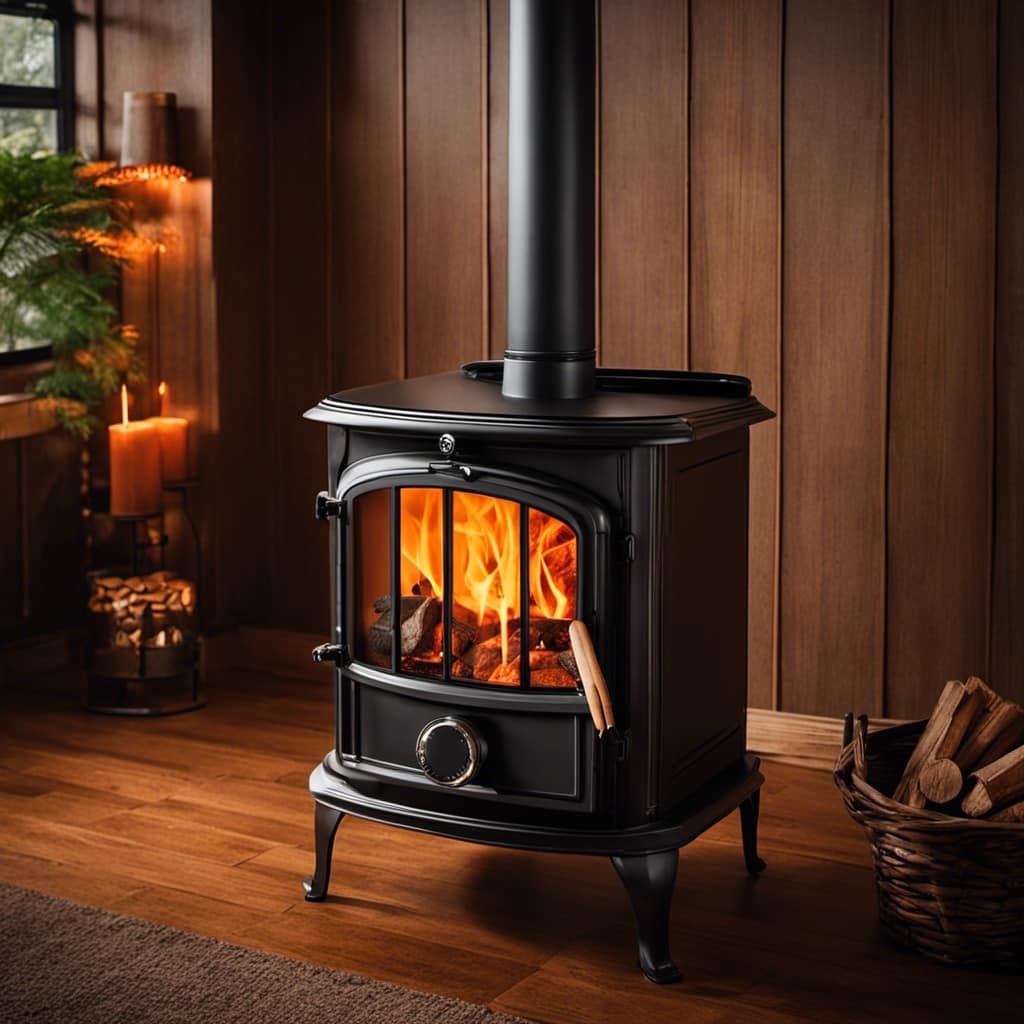
Conclusion
In conclusion, maintaining the right amount of ashes in your wood stove is crucial for efficient wood burning.
Just like a well-tuned instrument, the optimal ash depth allows for a harmonious dance between heat and oxygen, ensuring a roaring fire.
Too much ash can suffocate the flames, while too little can result in wasted energy.
By properly managing ash levels, you can keep your wood stove performing at its best, creating a cozy and inviting atmosphere in your home.
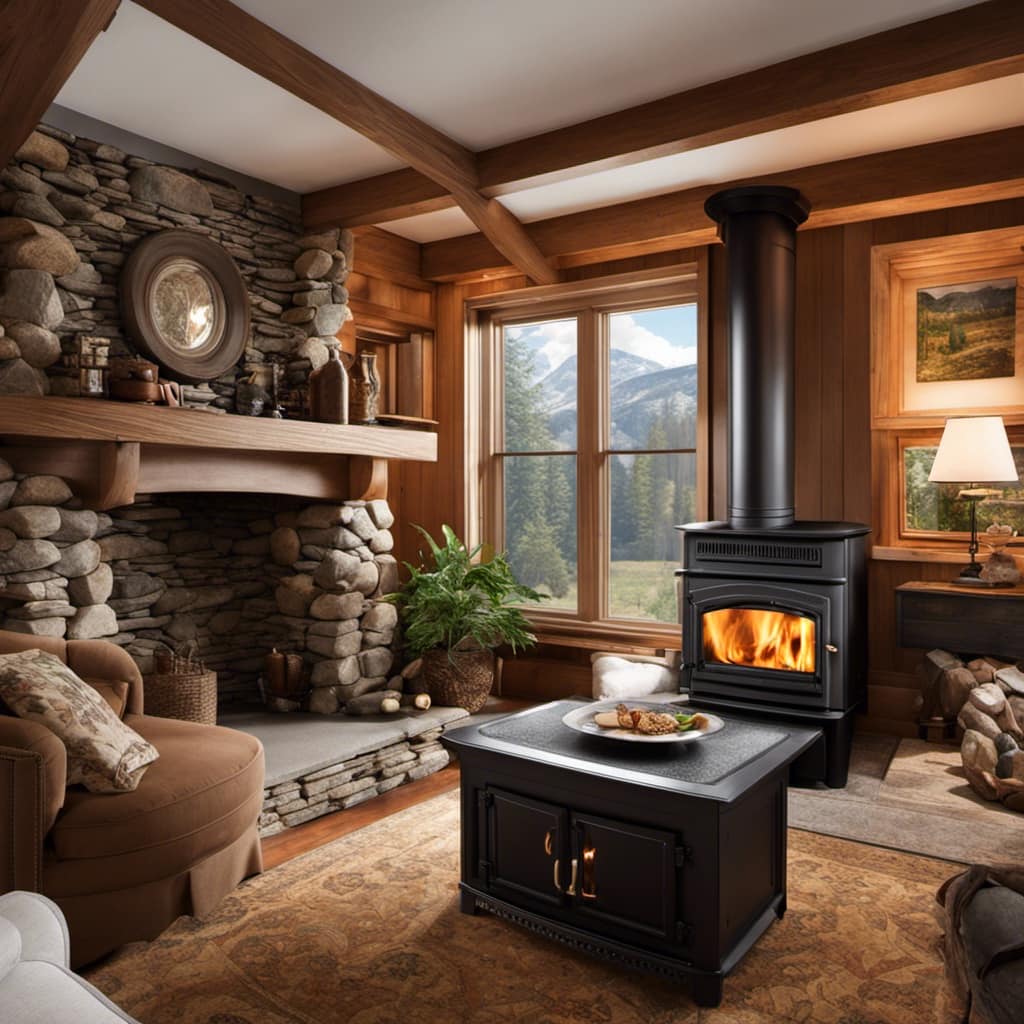
Growing up surrounded by the vast beauty of nature, Sierra was always drawn to the call of the wild. While others sought the comfort of the familiar, she ventured out, embracing the unpredictable and finding stories in the heartbeat of nature.
At the epicenter of every remarkable venture lies a dynamic team—a fusion of diverse talents, visions, and passions. The essence of Best Small Wood Stoves is crafted and refined by such a trio: Sierra, Logan, and Terra. Their collective expertise has transformed the platform into a leading authority on small wood stoves, radiating warmth and knowledge in equal measure.




